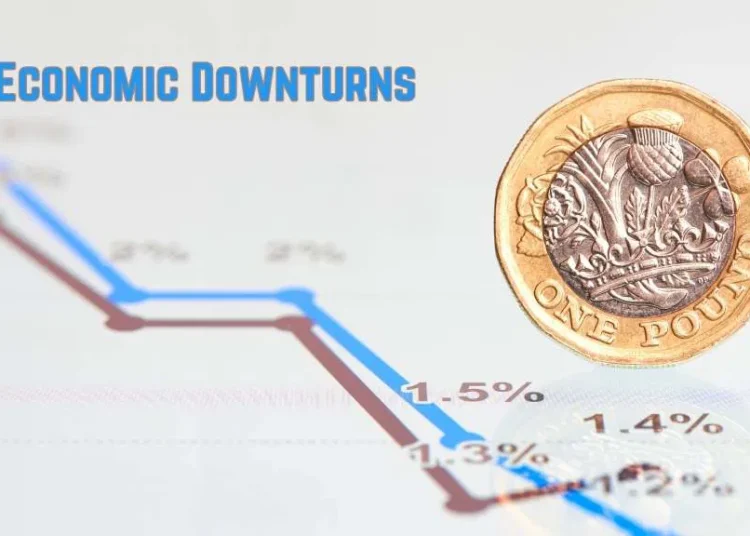Exploring the realm of Investment strategies during economic downturns, this article delves into the strategies and techniques essential for success in a volatile market environment.
Delve into the nuances of identifying opportunities, managing risks, and implementing long-term tactics that can weather the storm of economic fluctuations.
Strategies for identifying investment opportunities during economic downturns
During an economic downturn, it is crucial for investors to identify opportunities that can potentially yield high returns in the long term. One of the key strategies is to research and identify undervalued assets that have the potential for growth once the market recovers.
Diversification is also essential to mitigate risk in a volatile market. Additionally, analyzing market trends can help investors spot potential investments that align with their financial goals and risk tolerance.
Researching and identifying undervalued assets
When looking for investment opportunities during an economic downturn, it is important to conduct thorough research to identify undervalued assets. This involves analyzing financial statements, market conditions, and industry trends to determine the intrinsic value of an asset. By identifying assets that are trading below their intrinsic value, investors can potentially benefit from capital appreciation once the market recovers.
The importance of diversification in a volatile market
In a volatile market environment, diversification is key to managing risk and protecting investment portfolios. By spreading investments across different asset classes, industries, and geographic regions, investors can reduce the impact of market fluctuations on their overall portfolio. Diversification helps ensure that a downturn in one sector or market does not significantly impact the entire investment portfolio.
Methods for analyzing market trends to spot potential investments
Analyzing market trends is essential for identifying potential investment opportunities during an economic downturn. Investors can use technical analysis, fundamental analysis, and market indicators to assess market conditions and identify trends that may present investment opportunities. By staying informed about market developments and trends, investors can make informed decisions about where to allocate their capital for optimal returns.
Risk management techniques for investments during economic downturns
In times of economic downturns, it becomes crucial to implement effective risk management techniques to protect your investments. This involves strategies such as setting stop-loss orders, utilizing hedging, and proper asset allocation to navigate through uncertain market conditions.
Setting Stop-Loss Orders
Stop-loss orders are essential tools for limiting potential losses in a volatile market. By setting a predetermined price at which a security will be automatically sold, investors can protect themselves from significant downturns. This allows for a controlled exit strategy and prevents emotions from driving investment decisions.
Hedging to Minimize Risk
Hedging involves taking positions in the market that are inversely correlated to your existing investments. This helps offset potential losses in one asset class with gains in another, reducing overall risk exposure. For example, investing in gold or bonds during a stock market downturn can help balance out losses in equities.
Asset Allocation for Risk Management
Proper asset allocation is key to managing risk during economic downturns. By diversifying your portfolio across different asset classes, such as stocks, bonds, real estate, and commodities, you can reduce the impact of market fluctuations on your overall investment. This ensures that losses in one area can be offset by gains in another, providing a more stable and balanced investment strategy.
Long-term investment strategies to consider during economic downturns
During economic downturns, it is crucial to adopt long-term investment strategies that can help investors weather the storm and potentially benefit from market fluctuations. One such strategy is to identify industries or sectors that tend to perform well during downturns, allowing investors to capitalize on opportunities for growth even in challenging times.
Benefits of dollar-cost averaging in a volatile market
Dollar-cost averaging is a technique where investors regularly invest a fixed amount of money into a particular investment, regardless of market conditions. This strategy helps mitigate the impact of market volatility by spreading out the investment over time, reducing the risk of investing a large sum at a market peak.
By consistently purchasing shares at different prices, investors can potentially benefit from lower average costs per share over the long term.
Tips for staying patient and sticking to a long-term investment plan
Staying patient during economic downturns is key to successful long-term investing. It is important to resist the urge to react impulsively to market fluctuations and instead focus on the long-term goals of the investment plan. By maintaining a disciplined approach and avoiding emotional decision-making, investors can stay on track and potentially benefit from the eventual recovery of the market.
Tactical approaches to capitalizing on market fluctuations during economic downturns
In times of economic downturns, market fluctuations can present unique opportunities for investors to capitalize on. One such tactical approach is contrarian investing, which involves going against the herd mentality and investing in assets that are currently undervalued.
Contrarian Investing and its potential benefits
Contrarian investing is based on the belief that the market tends to overreact to both positive and negative news, causing assets to be mispriced. By identifying opportunities where the market sentiment is overly pessimistic, contrarian investors can purchase assets at a lower price than their intrinsic value.
This approach can lead to significant gains once the market corrects itself, and the asset returns to its true value.
Buying low and selling high during market dips
During economic downturns, many investors panic and sell their assets at low prices, leading to market dips. This presents a buying opportunity for savvy investors who can purchase quality assets at a discount. The strategy is to hold onto these assets until the market recovers, allowing investors to sell them at a higher price, thus realizing a profit.
Leveraging short-selling opportunities during downturns
Short-selling involves borrowing assets that are expected to decrease in value, selling them at the current market price, and then buying them back at a lower price to return to the lender. During economic downturns, there are often overvalued assets that are ripe for short-selling.
By correctly identifying these opportunities, investors can profit from the decline in asset prices.
Conclusive Thoughts
In conclusion, mastering the art of investment strategies during economic downturns requires a blend of patience, research, and strategic decision-making. By understanding the intricacies of the market and leveraging the right tools, investors can navigate turbulent times with confidence and resilience.
FAQ Resource
What are some key strategies for identifying undervalued assets?
Research extensively, look for assets with strong fundamentals, and consider market sentiment.
How can asset allocation help manage risk during economic downturns?
Asset allocation involves spreading investments across different asset classes to reduce risk exposure.
What is the concept of contrarian investing?
Contrarian investing involves going against prevailing market trends and sentiment to capitalize on opportunities others might overlook.








